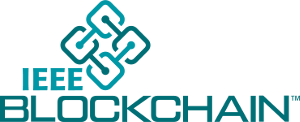Moving Blockchain From Pilot to Production: Lessons from Mike DiPetrillo’s IEEE Global Blockchain Summit Keynote
 Mike DiPetrillo of VMWare presented “Blockchain Landscape” (MP3, 54 MB) at the 2018 IEEE Global Blockchain Summit. This Q&A provides some key takeaways from the presentation.
Mike DiPetrillo of VMWare presented “Blockchain Landscape” (MP3, 54 MB) at the 2018 IEEE Global Blockchain Summit. This Q&A provides some key takeaways from the presentation.
How should the industry look at blockchain?
Blockchain is a new form of trust in the digital infrastructure. Traditionally, the industry has implemented databases to meet many of the needs a blockchain might address. A database has a centralized trust authority meaning someone is monitoring and backing it up, but you really have to trust that person who is maintaining the database. However, a blockchain is a decentralized trust system, so you don’t have to trust a central authority. This allows you to have trust distributed across multiple different parties.
What are the advantages of implementing blockchain?
Blockchain offers a number of advantages for companies willing to learn and adopt this technology. First, blockchain can drive efficiency. For example, in a complicated supply chain with multiple players it can make everyone on the same plane of data. When data is put into the distributed ledger it is replicated to all the different parties at the same time eliminating complexities of an electronic data interchange (EDI) system. Second, it can speed up the flow of data. You no longer have to worry if the information flowing through a system is current. There are all sorts of applications where speeding up the information flow speeds the transfer of goods, frees up money, frees up resources, and ultimately benefits everyone. Blockchain also provides transparency for auditors. This means you don’t have to shut down at the end of a quarter to do that audit because auditors are able to participate in stream in the applications.
Explain the typical adoption path companies take for blockchain and where the pain points exist.
First, a consortium leader is identified since it is decentralized trust system and typically more than one company is participating. This consortium decides on a business case and requirements that they use to seek out other companies to join them. Before anything is done from a technology standpoint, this consortium must be brought together and in agreement on what they want to accomplish. If the group cannot find consensus this becomes a failure point and the project is abandoned.
After the consortium is established the blockchain platform is then selected. Design and development of the application begins. This is another pain point in the process. People don’t understand or have the tools or knowledge to develop smart contracts and the project stops.
If the consortium has been able to overcome all the challenges they will move into a pilot. Once in a pilot, many times the efficiencies that were hoped for are not working, so they go back to the drawing board and select another blockchain platform and try again.
Once a pilot is showing a lot of promise they are ready to move it into production. From lack of auditing ability to scalability, these are common pitfalls people face when trying to move it into production. There are so many challenges in the blockchain adoption landscape, so currently very few are making it into production.
With so many challenges, how can blockchain move from pilot to production?
Blockchain needs to be used for the right use cases in order to move it from pilot to production. Here are four ways that blockchain is actually useful for to avoid pilot to production failure. The first use case is for guaranteed and verified data dissemination. This is very good when you need to do data flow and is especially helpful because you can put the auditor in line. The second use case is asset and product tracking. The food industry has been implementing this use case to track food from the source to the retailer. The third use case is asset transfer. You are able to transfer the asset without a “double spend” issue, meaning once an asset is transferred it is committed right away. This is seen with deeds and in the renewable energy sector. The fourth use case is certified claims. This affirms you are who you say you are or you have what you say you have. It is a popular use case for banks to verify customers. When a proper use case is selected blockchain can be effective.
Interested in learning more about the current blockchain landscape and how the industry can move forward? Listen now to the 2018 IEEE Global Blockchain Summit keynote presentation “Blockchain Landscape” (MP3, 54 MB) from Mike DiPetrillo, VMWare.


